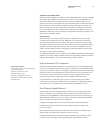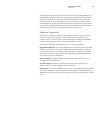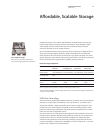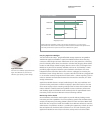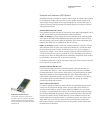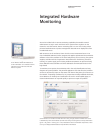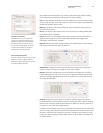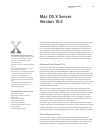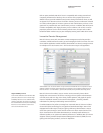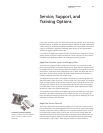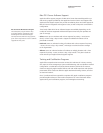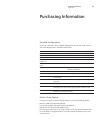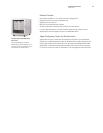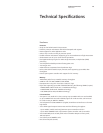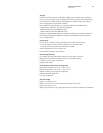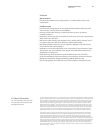
Built on open standards, Mac OS X Server is compatible with existing network and
computing infrastructures. Samba 3, the new version of the popular open source
SMB/CIFS server, provides reliable file and printer sharing for Windows clients, as well
as support for NT Domain services. The built-in directory services architecture is based
on LDAPv3, allowing Mac OS X Server systems to host LDAP directory services or inte-
grate with any network that uses LDAP directory services. In addition, Mac OS X Server
includes compatibility with legacy directory service solutions such as NIS, as well as
proprietary solutions such as Active Directory. What’s more, the open source UNIX-
based foundation makes it easy to port and deploy existing tools to Mac OS X Server.
Innovative Remote Management
Mac OS X Server comes with innovative remote management tools that provide a
consistent, unified interface for setting up and managing the built-in services. The new
Server Admin application enables network administrators to securely manage services
on multiple servers at the same time—all from the same easy-to-use application.
Administrators can use Server Admin on any Internet-connected Mac OS X computer to install
software updates (including system software), set preferences, and configure workgroup and
Internet services—such as Samba 3, Apache, DHCP, Postfix, and QuickTime Streaming Server.
Mac OS X Server also makes it easy to monitor services remotely. Server Admin
displays the current status of all services running on Xserve systems. Administrators
can read access and error logs, view charts of traffic patterns, and graph the perfor-
mance of individual network services and file throughput—providing valuable
information for planning and allocating network resources.
For administrators who prefer to manage from a terminal, Mac OS X Server includes
Secure Shell (SSH2) technology for encrypted and authenticated login. Xserve G5 is
equipped with a DB-9 (9-pin) serial port, giving UNIX-savvy administrators a way to
access the system through a serial console session even when network services are
down. Command-line tools allow administrators to remotely install software, run
Software Update, or set system and network preferences. In addition, Mac OS X Server
supports industry-standard Simple Network Management Protocol (SNMP) for inte-
grating with third-party products, such as HP OpenView.
23
Technology Overview
Xserve G5
High-availability services
To minimize downtime and maximize data
protection, Mac OS X Server includes high-
availability features such as software RAID,
directory replication, file system journaling, a
two-node IP failover service, and “watchdog”
features such as automatic restart of the
server and individual services.



